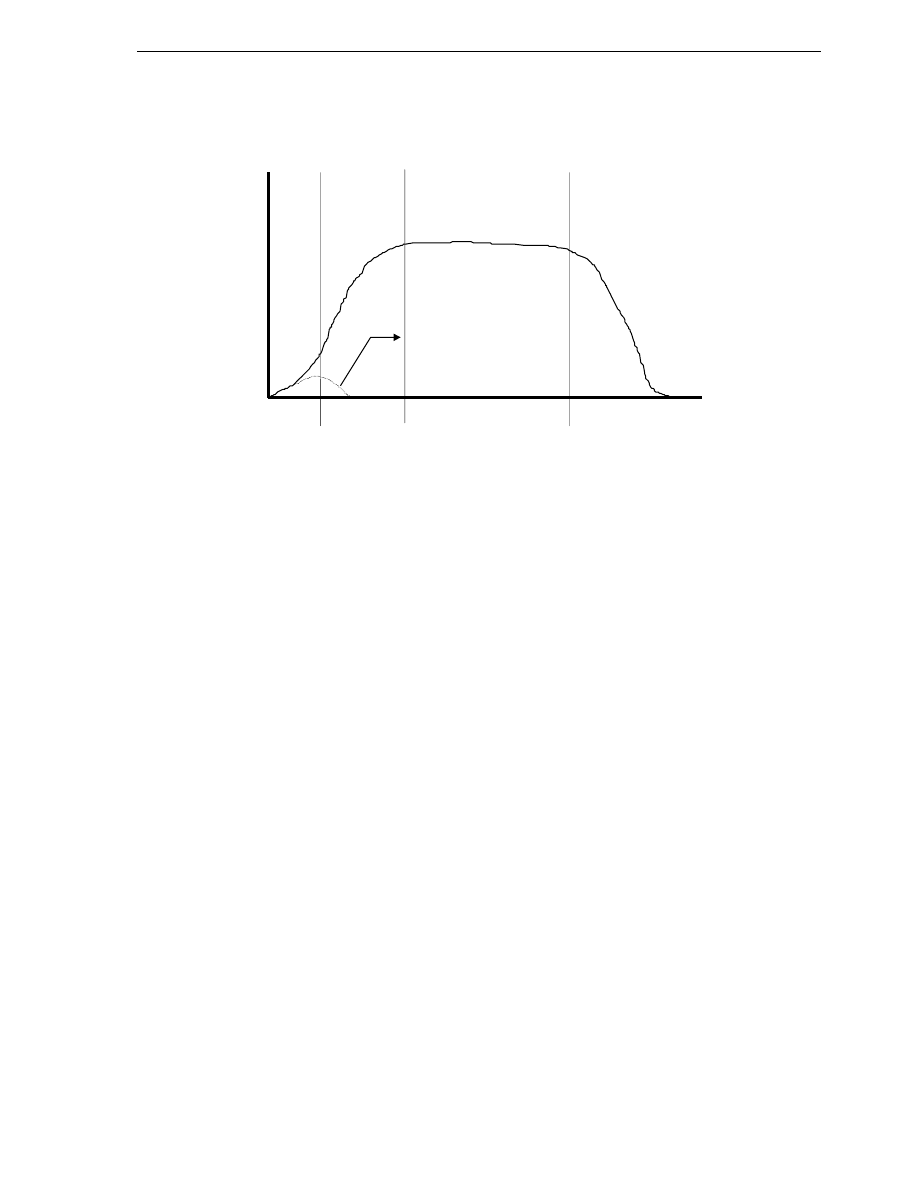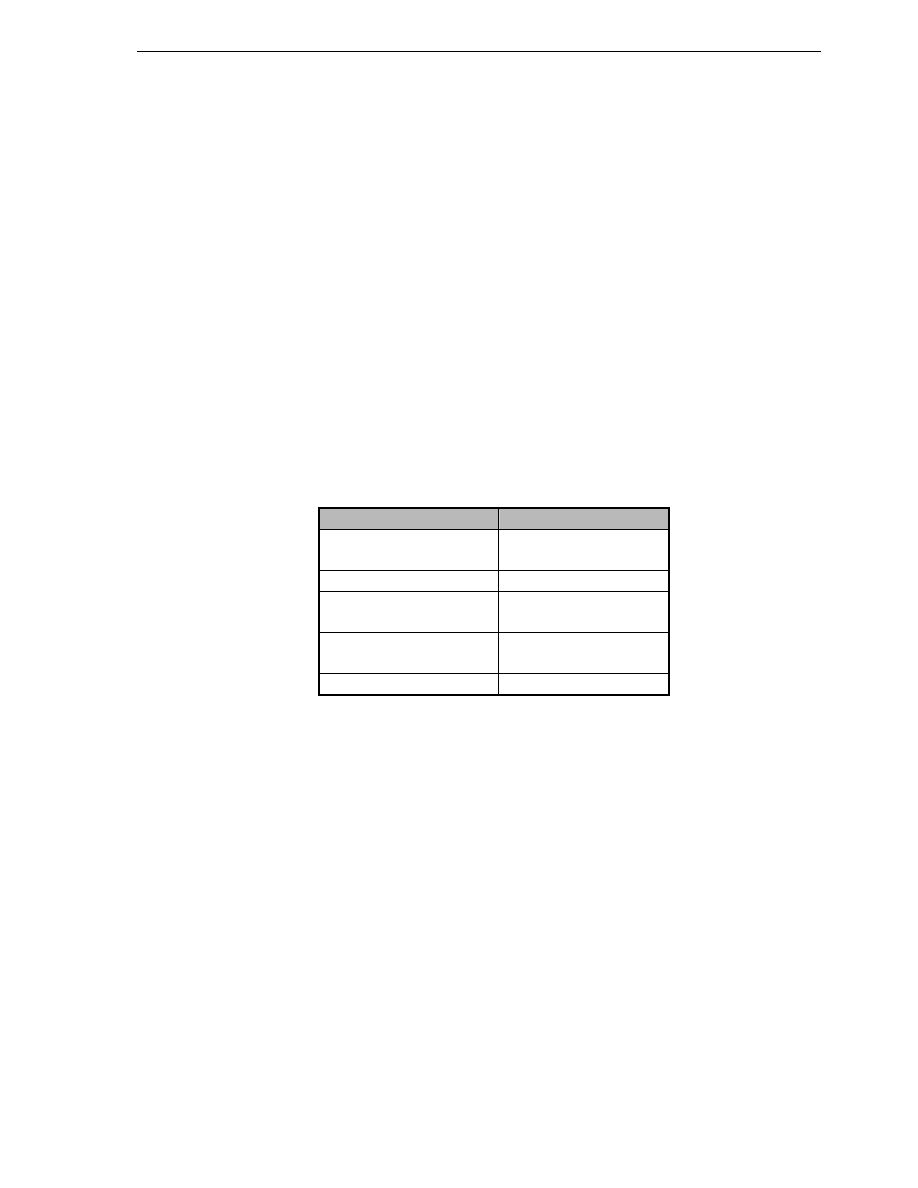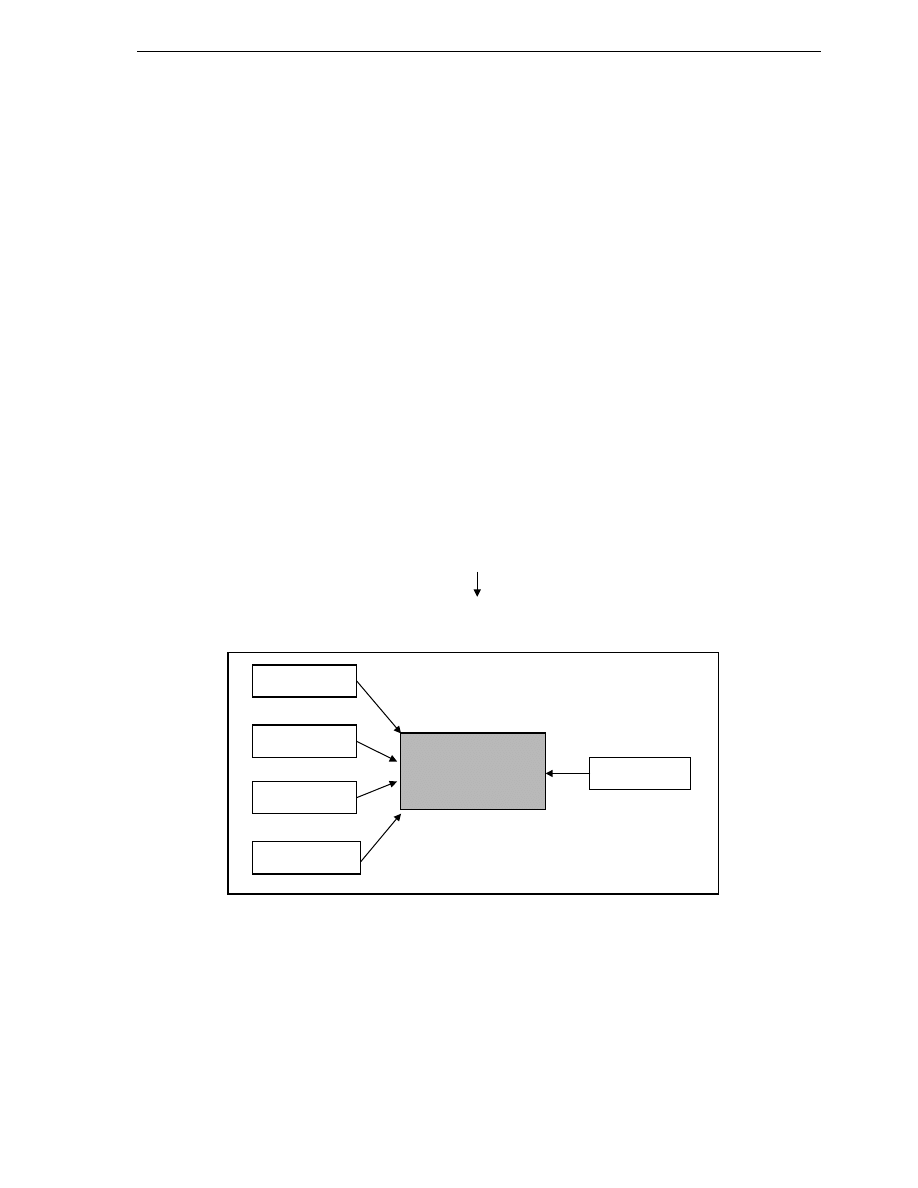
English preparation
P
R O D U C T I O N T E C H N I Q U E
Hoffer Gusztáv 5hba 1997
Topic:
FLEXIBLE MANUFACTURING SYSTEMS,
COMPUTER INTEGRATED MANUFACTURING
FMS AND CIM - A SURVEY
INCLUDING
STRATEGY, REASONS AND CONSEQUENCES OF IMPLEMENTATION,
SUBSYSTEMS AND TECHNOLOGY

E N G L I S H M A T U R A P R E P A R A T I O N
Flexible Manufacturing Systems, Computer Integrated Manufacturing
3MEP_CIM.DOC
- page 2/ 2
1 W
HAT IS MEANT BY
FMS?
The key issue weather for small and large institutions is to produce and design products „to order“
rather than „for stack“ to cut manufacturing costs and to stay in business in the future. Flexible
manufacturing systems in this sense offers the fabrication facilities and techonologies for this
concept. (This facilities may include testing, packaging, painting a. o.)
2 W
HAT IS MEANT BY
CIM?
CIM is connected with a lot of likesome elements, but their information flow inbetween is not very
clear, because CIM is connected with a lot of elements. The essence of CIM can be shown best with
integration, though CIM was not designed for strict declarations. The CIM concept shows further
the historically grown action areas of electronic data processing for each department.
2.1 Definition of CIM
Computer Integrated Manufacture is concerned with providing computer assistence, control and
high level integrated automation at all levels of manufacturing (and other) industries, by linking
islands of automation into a distributed processing system. The technology applied in CIM makes
intensive use of distributed computer networks and data processing techniques, Artificial
intelligence and Data Base Management Systems.
Computer Integrated Manufacturing covers all activities related to the manufacuring business,
including:
♦
Evaluating and developing different product strategies.
♦
Analysing markets and generating forecasts.
♦
Analysing product/market characteristics and generating concepts of possible
manufacturing
systems.
♦
Evaluating manufacturing capacity, scheduling and control strategies relating to the design
and fabrication processes involved in the particular product.
♦
Analysing and feeding back certain selected parameters relating to the manufacturing
processes.
♦
Analysing and providing data at the appropriate level and time and in the appropriate
format.

E N G L I S H M A T U R A P R E P A R A T I O N
Flexible Manufacturing Systems, Computer Integrated Manufacturing
3MEP_CIM.DOC
- page 3/ 3
2.2 The typical life cycle diagramm
The diagramm shows the typical life cycle of almost every product. After a short introductory phase
you find out wheather the product is going to be well-sold or not. If not, there is no need for the
product, we say the product type has failed. With the help of publicity and promotion, the product
gets into an increasing demand phase, the uncertainty of the customer has been overcome
(überwunden). After this phase the product is acknowledged by the customer and accepted on the
market. This phase lasts as long as the product is competitive on the market, which means it is
modern or pretty enough. For example jeans enjoy this phase over decades. But nothing lasts
forever. Sometimes the product gets into a declining phase. If we compare this to the automobile
sector we find out the following: After a couple of years, the car is not up-to date, even if the car is
addapted or facelifted. If there is no readiness for buying that car, the car gets into a declining phase.
Of coarse spare parts must be produced for several years to come.
In order to achieve the maximum benefits of flexible automation, one needs to implement CIM.
2.3 CIM. The business strategy
Today in order to stay in business and prosper, manufacturing enterprises are seeking higher
effectiveness and competitveness across the entire cycle of marketing, product design, manufacture,
test and sales. An increasing number of them have chosen and are choosing various levels of CIM as
a solution.
⇒
Some important aspects of the conclusions that by applying CIM technology:
⇒
Engineering design costs can be reduced by 15-30%.
⇒
The overall lead time can be reduced by 30-60%.
⇒
The product quality can be increased dramatically, as measured by the yield of acceptable
product, offering 2-5 times the previous level.
⇒
Productivity of production operations can be increased by 40-70%.
⇒
Operating time related productivity can be increased by 2-3 times.
Introductory
Phase
Increasing
demand
Phase
Stable Phase
Declining Phase
Product
Status
Time
Spare Parts
must be
produced for
several years
to come.
Stable
Product
failure

E N G L I S H M A T U R A P R E P A R A T I O N
Flexible Manufacturing Systems, Computer Integrated Manufacturing
3MEP_CIM.DOC
- page 4/ 4
2.4 The components of CIM
In comparison with FMS, CIM is mainly concerned with the information processing tasks at all
levels of the factory and its management, including PPS, CAD, CAM, (CAP, CAQ) and the
business data processing system, wheras FMS provides the essential computer controlled
manufacturing tools and shop floor control systems for CIM to execute the computer generated
plans and schedules that take account of a total system rather than just on cell or shop.
CIM faces these problems in production, but its no solution, which can be installed rapidly.
CIM is not to be understand as a new hard- or softwareproduct. Its a philosophy of integration of
each informationflow in business and though a concept, to rationalizating information flows.
2.4.1 Product Planing and Control System (PPS)
Within the Product Planing and Control System we understand the tasks of business and
commercial work, including every kind of administrative activity, which is necessary to supervise
and control production run. PPS covers the hole production process.
PPS is diveded in sub-groups as follows:
Deutsch
English
Produktions- und
Programmplanung
production- &
programplaning
Mengenplanung quantity
planing
Termin- und
Kapazitätsplanung
appointment- &
capacity planing
Auftragsveranlassung instruction
arrangement
Auftragsüberwachung instruction
supervise
2.4.2 Computer Aided Design (CAD)
its the short cut for computer aided designing of construcion drawings and calculatings. The great
goal of CAD is the accelerations of routine working methods.
2.4.3 Computer Aided Manufacturing (CAM)
describes the data processing support for technical control and supervising the operating data at the
creation of the several objects in production. CAM covers the automatic making of parts, their
automatic transport, and the automatic stock control.
2.4.4 Computer Aided Planing (CAP)
describes the data processing support at the capacity planning (Arbeitsplanung?). The capacity
planning sets up on the results of CAD or conventional designing of construction. We have to
distinguish betwenn conventional production and NC production.

E N G L I S H M A T U R A P R E P A R A T I O N
Flexible Manufacturing Systems, Computer Integrated Manufacturing
3MEP_CIM.DOC
- page 5/ 5
2.4.5 Computer Aided Engineering (CAE)
describes the engineered charge of Problems. CAE Systems are formly known since the beginning
of electronic data processing, but today the aim is to lead to an interactive pre-processing, inclusive
to make contact to CAD.
2.4.6 Computer Aided Quality Assurance (CAQ)
Within the CAQ the computer aided functions of quality assurance are summarized. It is a
considerable motto of CIM. It means: „Quality has not to be proven, but produced!“. The main
emphasis of CIM is the quality of each Product, which leaves the assembly line. This is because
refused products (Ausschußprodukte?) lead to unnecessary expenses and furthermore to post-
working processes, in some cases even to the hole new production of the part, respectivaly the
article, as such. In contrast to conventional quality control, which only emits refused products, CAQ
starts at the very beginning of the planing of the product. When the checking features and -plans are
fixed, it has influence on the hole construction.
2.5 CIM overview diagramm
3 W
HAT IS QUALITY
?
Quality has to do with the way we deal with other people, with clear definitions of work,
direction(s) and expectations, and with understanding the demands that others have on our
organisations, our products and our services.
CAQ
CAD
CAP
CAM
CAE
PPS
CIM
FMS
offers the fabrication facilities and
techonologies for this concept

E N G L I S H M A T U R A P R E P A R A T I O N
Flexible Manufacturing Systems, Computer Integrated Manufacturing
3MEP_CIM.DOC
- page 6/ 6
4 R
EASON AND
C
ONSEQUENCES OF IMPLEMENTATION
First of all, CIM is, apart from every kind of advantage, a trendy implementation of todays business.
The main reason of implementation is to reduce drop out rates and to increase quality standards.
The aim of CIM is to put the whole production into a global, firmcoverd computer network. CIM
provides within the CAQ an outstanding quality management. This is because the CAQ rules over
each department.
In CIM, quality control starts at the very beginning of the product manufacture. From the planing
phase over the construction till the assembly line, quality assurance takes place in the hole
production cycle.
As a consequence, the firm gets transparent through every area and the information flow among
each section gets increased.
And last but not least, the customer is satisfied.
Wyszukiwarka
Podobne podstrony:
6151
Nokia 6151 UG pl
6151
6151
6151
6151, W6 - górnictwa
6151
06 Petleid 6151 ppt
6151
6151
prezentacja P 6151 boroń
6151
6151
więcej podobnych podstron